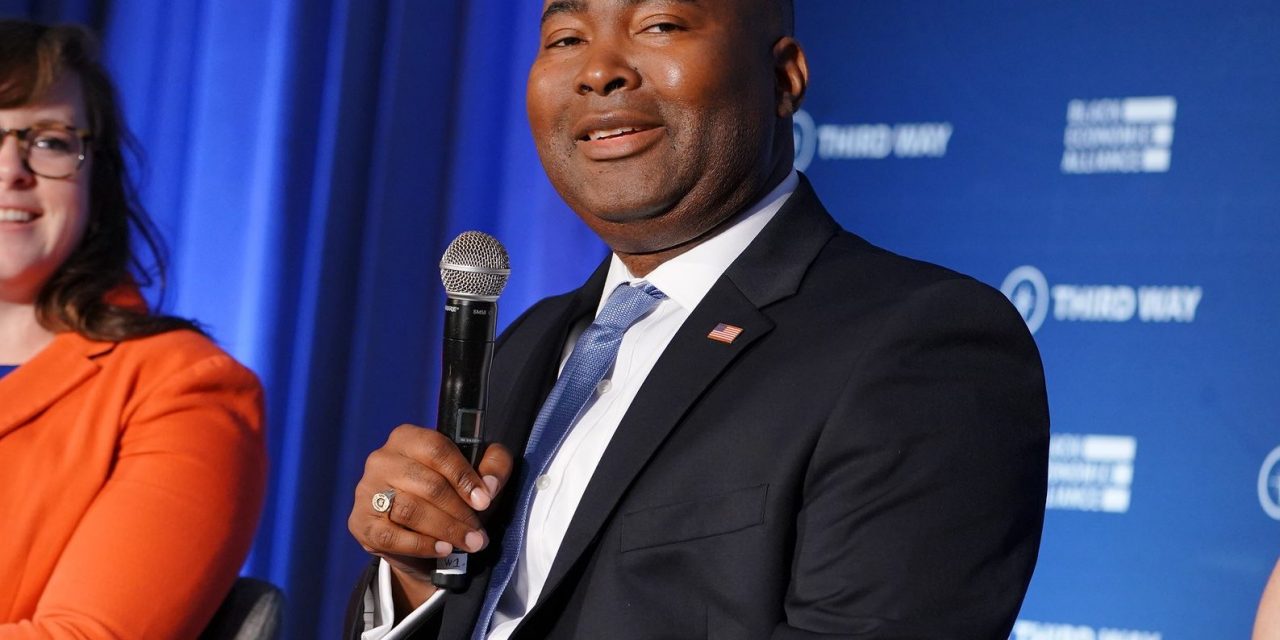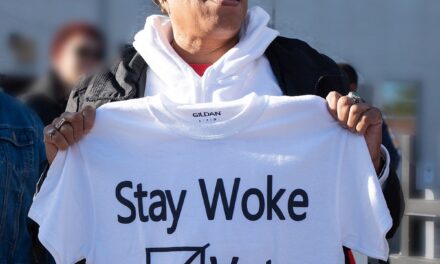Image Credits: Adam Schultz.
Did Green Party presidential candidate Jill Stein cost Hillary Clinton the 2016 election? We can’t know for sure because so many factors could have led to her defeat. But it’s certainly plausible that this third-party bid delivered us four years of Donald Trump. The wound is still raw: Trump won the Electoral College buoyed by three traditionally Democratic states—Wisconsin, Michigan, and Pennsylvania—which he won by a mere 78,000 votes. If every Stein voter in Pennsylvania, Michigan, Wisconsin had cast a vote for Clinton, Trump would have lost.
It’s hard to imagine a third-party candidacy derailing Joe Biden, although it’s remotely possible if the race tightens. Unlike 2016, Democrats have aggressively exploited legal technicalities to keep Green Party candidates—many of whom have been helped by the GOP–off the ballot in pivotal states like Wisconsin and Pennsylvania. While the Libertarian Party announced in September that its presidential ticket would appear on the ballot in all 50 states and Washington, D.C., the Green Party’s candidates will do so in only 30.
The Green Party will be an option in Florida and other battleground states, such as Minnesota and Ohio, drawing at least some Biden votes. But this year’s Green Party ticket of Howie Hawkins and Angela Walker—have you heard of them?—seems less likely to tip the scales than Stein’s did.
Third-Party candidates’ real effect could be in the U.S. Senate, where Republicans control the chamber 53-47. Democrats wresting it from them could come down to two states, South Carolina and Georgia, where third-party voting could prove pivotal.
If you have any doubt about that, look at Jaime Harrison, the Democratic nominee in South Carolina challenging three-term incumbent Sen. Lindsey Graham. This month, Harrison began running ads that touted a far-right Third-Party conservative candidate to peel votes away from Graham. It’s a jarring and, some might say, brilliant gambit. The ad touts the Constitution Party’s Bill Bledsoe in a manner designed to pet the erogenous zones of conservatives. It notes that Bledsoe has “always supported Donald Trump” (unlike Graham) and is a fervent supporter of gun rights. It also states that Bledsoe is “on the ballot,” which is technically correct. Even though Bledsoe dropped out of the race on October 1, he did so after the deadline had passed to have his name removed from the ballot, and he didn’t bother to submit the paperwork to get that done. There’s even a picture in the ad showing a ballot where a Palmetto State Republican could check his name. If the image of Harrison (an African-American Yale grad with a genial and gentle mien) seems incongruous in an ad that all but spouts a Confederate Flag, that’s because it is. (A candidate’s image is required by law at the end of a broadcast ad.)
Democrats’ efforts to cause such rifts on the other side of the ideological divide are relatively rare, and so are Republican ones, but they can work. In 2012, then Sen. Claire McCaskill, the Missouri Democrat, ran ads touting Todd Akin, a contender for the GOP nomination to challenge her, believing he’d be a weaker general election candidate. That proved to be a smart bet. Akin won his primary and then imploded in the general election following his infamous quip about abortion and “legitimate rape.”
If enough votes go to Bledsoe, it could make a decisive difference in the Harrison-Graham race, which is tight. The latest survey, taken by GBAO Strategies from September 23 to September 28, has Harrison beating Graham 48 percent to 47, with Bledsoe pulling a potentially game-changing three percent.
Bledsoe is a character, the kind who Harrison can exploit. A veterinarian from Spartanburg, Bledsoe ran for the South Carolina’s other U.S. Senate seat in 2018 on both the Constitution Party and Libertarian Party lines. He got just 2 percent but demonstrated a flair for attracting cameras–even brandishing a Revolutionary War-era musket to show he was the staunchest opponent of gun restrictions. But incumbent Tim Scott won that race by 23 points, so Bledsoe’s single-digit showing meant nothing to the outcome of the race. By contrast, Harrison can win buoyed by a charismatic style, Graham fatigue, astronomical fundraising, and, perhaps, leveraging Bledsoe’s name. Not surprisingly, Graham welcomed Bledsoe’s endorsement with the same kind of obsequiousness he’s shown President Trump since the days when the former Air Force lawyer called Candidate Trump “crazy” and “a religious bigot” among other epithets.
Georgia is another state where a Third-Party candidate could make a real difference. Georgia has two Senate elections this year. In one, which features numerous Democrats and Republicans vying to fill the seat of retired GOP Sen. Johnny Isakson, don’t look for Third-Party candidates to play much of a role. It’s the contest between incumbent Republican Sen. David Purdue and Democrat Jon Ossoff, where the GOP and Democrats are concerned about Third-Party voters’ potential impact.
The latest public survey, conducted by Public Policy Polling on October 8-9, has Ossoff, who lost a much-publicized bid for Congress in 2018, leading 44-43 percent. The Libertarian Party candidate, Marine Corp veteran Shane Hazel, clocks in at four percent. A Landmark Communications poll conducted exclusively on October 7 shows Perdue ahead 47-46, with Hazel at two.
Carrying a legacy from the Jim Crow era, Georgia, like a few other states, including Louisiana, requires a runoff election if no candidate reaches a certain threshold. Georgia’s is the only one that requires a majority to avoid a runoff. In 1966, the law’s authors intended it to safeguard against a unified black vote overcoming a divided white vote.
In the Purdue-Ossoff race, this law could help Ossoff initially but perhaps not in the runoff. Since the Libertarian Party typically pulls more support from the right, Hazel’s candidacy could prevent Purdue from winning a majority and avoiding the runoff on January 5, two days after the Senate is seated. Avoiding flat-out defeat would give Ossoff a chance to contend in a runoff. But Democrats still smart from 1992 when a Libertarian’s strong showing forced a runoff between the incumbent U.S. Senator, Democrat Wyche Fowler, and his Republican challenger Paul Coverdell. Fowler lost in what was perhaps a harbinger of a very tough 1993 and 1994 for the new president-elect Bill Clinton.
Ossoff has a shot, though a distant one, at winning a majority outright. The state is trending blue. FiveThirtyEight gives Biden a 46 percent chance of winning there, and it’s telling that Trump visited Macon, Ga. last week, a once impossible-to-imagine sign of desperation for a GOP nominee late trying to hold on to a red state. With control of the Senate on the line, the November 3 contest between Perdue and Ossoff will get enormous national attention and atypically high voter participation but maybe not enough to put Ossoff over the 50 percent threshold.
Democrats haven’t historically fared well in Georgia’s runoff elections, primarily because they’re typically low-turnout affairs. And Democrats need large turnouts. They get their base excited leading up to Election Day for candidates up and down the ballot. Getting them to come back some 11 weeks later for just one race is a heavy lift. The best chance for that to happen would be if, after November 3, neither party is in firm control of the Senate and the Ossoff-Perdue runoff becomes the deciding factor.
Third parties may win less support his time around. There are no high-profile figures atop the Green Party ticket such as Ralph Nader in 2000 or Stein in 2016. There are no high-profile Libertarian nominees for president and vice-president like former Republican Governor of New Mexico, Gary Johnson, and his 2016 running mate Bill Weld, the former governor of Massachusetts. But Third Parties still have the potential to change everything in the Senate.







